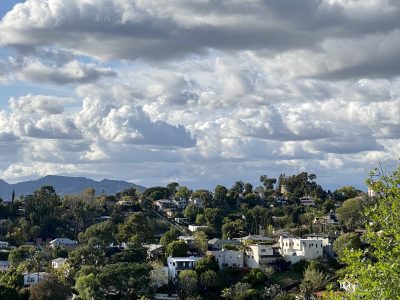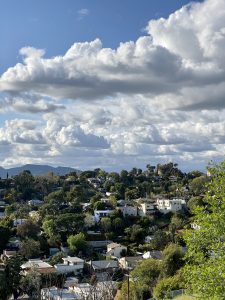 Headlines from across the world have trumpeted one of the few benefits of the shutdown that has accompanied the global Covid-19 pandemic: cleaner air quality. Los Angeles has starred in those headlines, with many reporters calling attention to the fact that the region had some of the cleanest air in the world during a period …
Headlines from across the world have trumpeted one of the few benefits of the shutdown that has accompanied the global Covid-19 pandemic: cleaner air quality. Los Angeles has starred in those headlines, with many reporters calling attention to the fact that the region had some of the cleanest air in the world during a period …
Continue reading "Los Angeles Air Quality in the Time of Covid-19"
The post Los Angeles Air Quality in the Time of Covid-19 appeared first on Legal Planet.
#losangeles #thetime https://legal-planet.org/wp-content/uploads/2020/04/LA-400x300.jpg https://legal-planet.org/2020/04/21/los-angeles-air-quality-in-the-time-of-covid/
 Headlines from across the world have trumpeted one of the few benefits of the shutdown that has accompanied the global Covid-19 pandemic: cleaner air quality. Los Angeles has starred in those headlines, with many reporters calling attention to the fact that the region had some of the cleanest air in the world during a period in April. EPA data also confirm that during late March and early April, Los Angeles had its longest stretch of clean air since the agency began tracking data. Photos during the pandemic prove the point: the air has been stunning. I took the photo in this post on a hike on March 26th: from high above the city, the air was so clean we could see not only Catalina Island, miles off the coast, but the cranes and equipment at the Port of Los Angeles.
Headlines from across the world have trumpeted one of the few benefits of the shutdown that has accompanied the global Covid-19 pandemic: cleaner air quality. Los Angeles has starred in those headlines, with many reporters calling attention to the fact that the region had some of the cleanest air in the world during a period in April. EPA data also confirm that during late March and early April, Los Angeles had its longest stretch of clean air since the agency began tracking data. Photos during the pandemic prove the point: the air has been stunning. I took the photo in this post on a hike on March 26th: from high above the city, the air was so clean we could see not only Catalina Island, miles off the coast, but the cranes and equipment at the Port of Los Angeles.
But a number of media reports about L.A. air have been misleading in an important respect. In writing about L.A.’s crystal blue skies, they’ve used the opportunity to caricature L.A. air under more typical circumstances. CNN’s headline is a perfect example: “Los Angeles Has Notoriously Polluted Air. But Right Now It Has Some of the Cleanest Air of Any Major City.” Another proclaimed in early April that “Shutdowns from coronavirus create blue skies in California.” Both headlines perpetuate the erroneous perception that L.A. air is, on any given day, filthy. And they fail to recognize that March and April in particular often produce stunning vistas and clear blue skies even without a shutdown of most of the economy.
L.A. has, to be sure, ongoing pollution problems. The South Coast Air Quality Management District, which covers 11,000 square miles and four counties, violates federal air pollution standards on too many days for both ozone and small particulate pollution. And residents of the basin who live near heavily trafficked roadways, the ports of Los Angeles and Long Beach, and pollution sources like oil refineries — often communities of color — suffer disproportionately bad air pollution. The counties of Riverside and San Bernardino bear the burden of too much pollution created in neighboring Orange and Los Angeles Counties.
But the news reports about L.A’s “notorious pollution,” and implications that L.A. skies are not usually blue are based on stereotypes about L.A. smog that we no longer deserve. They obscure just how much Southern California has accomplished in cleaning up its air over the last fifty years and more. We should recognize — 50 years after the first Earth Day, — just how far L.A. has come from its polluted past. The passage of the Clean Air Act in 1970 – one of the great accomplishments of the burgeoning environmental movement – is the main reason why.
Here are a few examples to prove my point. In 2018, the County of Los Angeles violated federal ozone standards on a single day. Orange County had no violations. Riverside and San Bernardino had many more violations, but most of those violations were for levels not far above the very tough federal ozone standard. During 2018, the entire air district met federal standards for lead, sulfur dioxide, carbon monoxide, and nitrogen dioxide. The region violated the particulate standard (called PM 2.5) on just nine days. One of those days was the Fourth of July.
Fifty years earlier, L.A. suffered from truly toxic air quality on a huge number of days throughout the year. Records from 1970 show that the air was so polluted it exceed the then higher federal ozone standard on 220 days of the year. Most of those violations were at levels almost 300 percent higher than today’s pollution standards and many exceeded the standard by close to 500 percent. There were days that were so bad that authorities ordered all non-essential business to shut down. Los Angeles airports sometimes had to close because pilots couldn’t see the runways. Most of this pollution came from the tailpipes of cars and trucks.
Cars of the 1950s, 60s and early 70s also ran on leaded gasoline. Lead from gasoline ended up in people’s blood in alarming amounts. Average lead levels in kids in the 1970s were more than a thousand percent higher than lead levels in the children of Flint, Michigan’s after lead was recently discovered in the city’s drinking water. African American kids in the 1970s had average lead levels double the levels of white kids. Lead exposure depresses IQs, causes behavioral problems, hypertension, and kidney disease.
The 1970 Clean Air Act’s tough standards for cutting pollution from cars, implemented jointly by the EPA and California, pushed industry to install catalytic convertors on new cars in the mid-1970s. Not only did these catalytic convertors cut air pollution across the country — and especially in car-dependent Los Angeles — but they couldn’t operate effectively when used with leaded gasoline. As a result, the Clean Air Act led the EPA in the early 1970s to require gas stations to offer unleaded gasoline and the catalytic converter made leaded gasoline a thing of the past. Average lead levels in kids today are a tiny fraction of what they were in the 1970s, one of the Clean Air Act’s greatest public health accomplishments.
Southern California now comfortably meets air quality standards for four pollutants regulated by the federal government: carbon monoxide, nitrogen dioxide, lead, and sulfur dioxide. And while, as I’ve described above, we still violate ozone and PM 2.5 standards, we have made tremendous progress in cutting those pollutants too.
There is still significant work to be done to bring the south coast region into compliance with ozone and particulate pollution standards. The shutdown during the pandemic has shown us what air quality could look like without the pollution that comes from driving. 80 percent of Southern California pollution is caused by transportation — trucks, cars, trains, and ships. The pandemic shutdown has, obviously, taken most cars off the road. As we gradually lift the shutdown restrictions and driving to work and shop and take kids to school resumes, our pollution levels will increase to pre-pandemic levels.
But there is a way to get the benefits we’ve seen during the pandemic without shutting down the economy and causing all the horrible economic hardship so many are suffering. California is leading the way nationally to a future of zero emission vehicles, fueled by electricity from a grid powered with renewable energy or with alternative fuels like hydrogen that create no pollution. A transportation fleet with no emissions would solve our remaining air pollution problems and also tackle the carbon pollution that is causing the globe to warm. The covid-19 pandemic, with all its horror, has also given us a glimpse of the future environment we might experience.
As we celebrate the 50th Earth Day in 2020, we should recognize just how far Los Angeles — and every other air district in the country – has come in cleaning up our air. And we should recognize that in this time of global pandemic, there is an even cleaner air future caused not by orders to stay inside and shelter from a virus that can infect and kill with remarkable efficiency, but by a transition to vehicles powered by fuels that emit none of the pollutants that create smog and none of the pollution that is overheating our planet. The Trump Administration is doing everything in its power to thwart California leadership on clean vehicles, as we have documented extensively on Legal Planet. But if we push forward to a clean vehicle and energy future, by our 70th Earth Day, we could see the clean blue skies of the covid-19 shutdown on every single day of the year.
The post Los Angeles Air Quality in the Time of Covid-19 appeared first on Legal Planet.
By: Ann Carlson
Title: Los Angeles Air Quality in the Time of Covid-19
Sourced From: legal-planet.org/2020/04/21/los-angeles-air-quality-in-the-time-of-covid/
Published Date: Tue, 21 Apr 2020 11:45:46 +0000
Vist Maida on Social Me
Website Links
Maida Law Firm - Auto Accident Attorneys of Houston, by fuseology
PRESS RELEASE COVID-19 UPDATES
http://www.kake.com/story/41966303/covid19-maida-law-firm-is-open-and-fully-operational-during-this-crisis
No comments:
Post a Comment